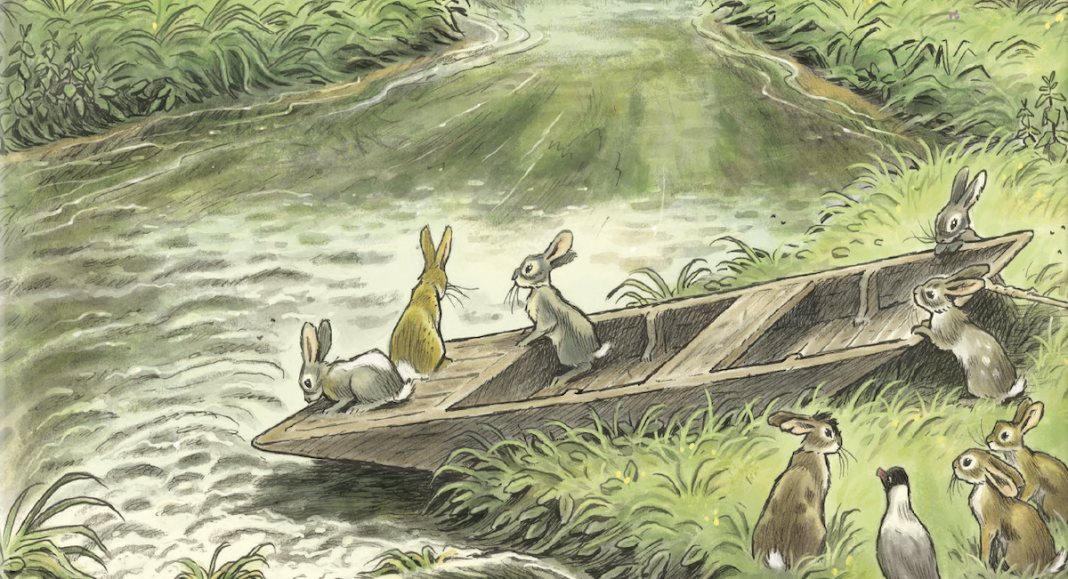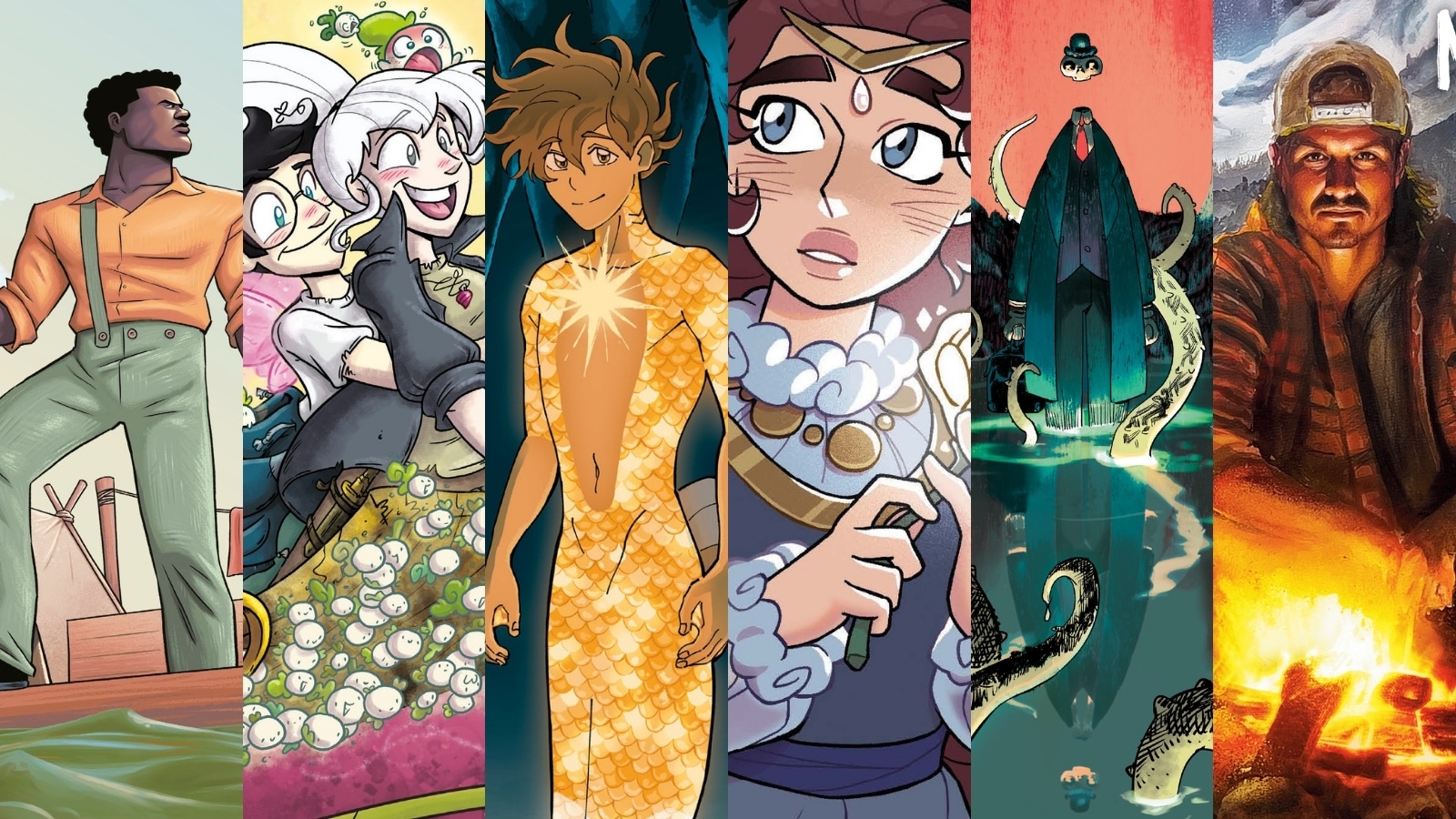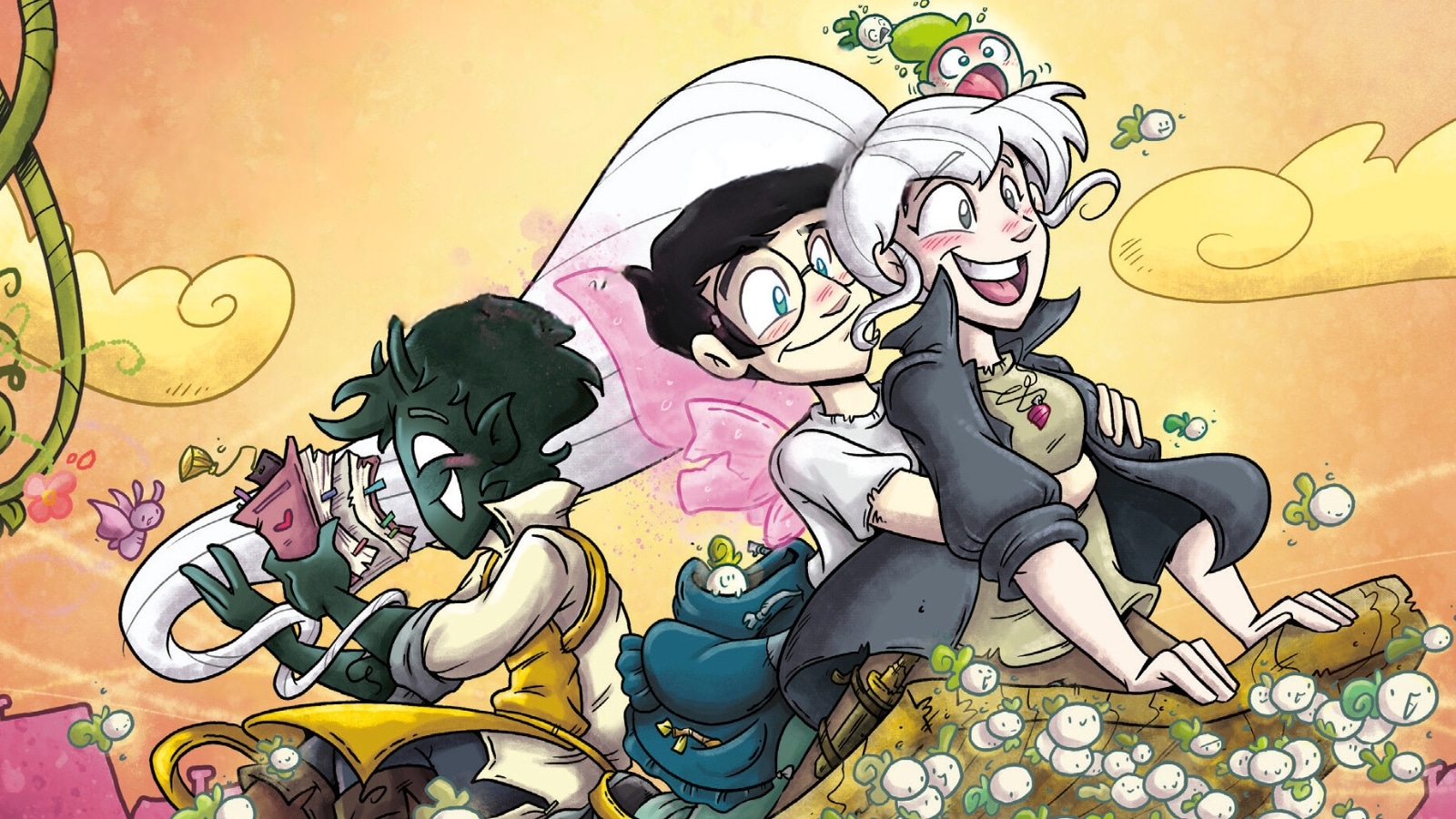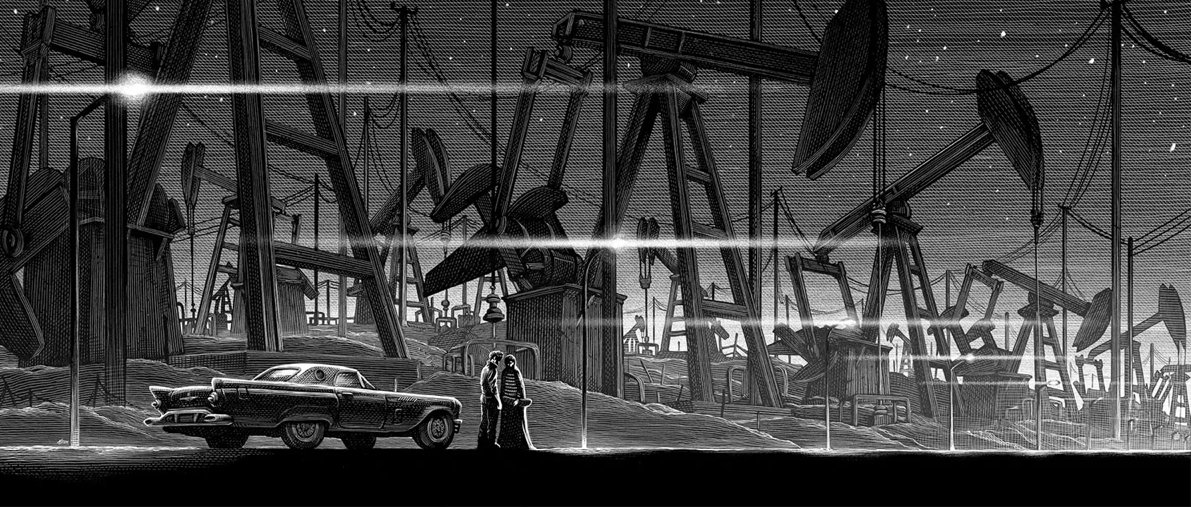Interview by Avery and Rebecca Oliver Kaplan
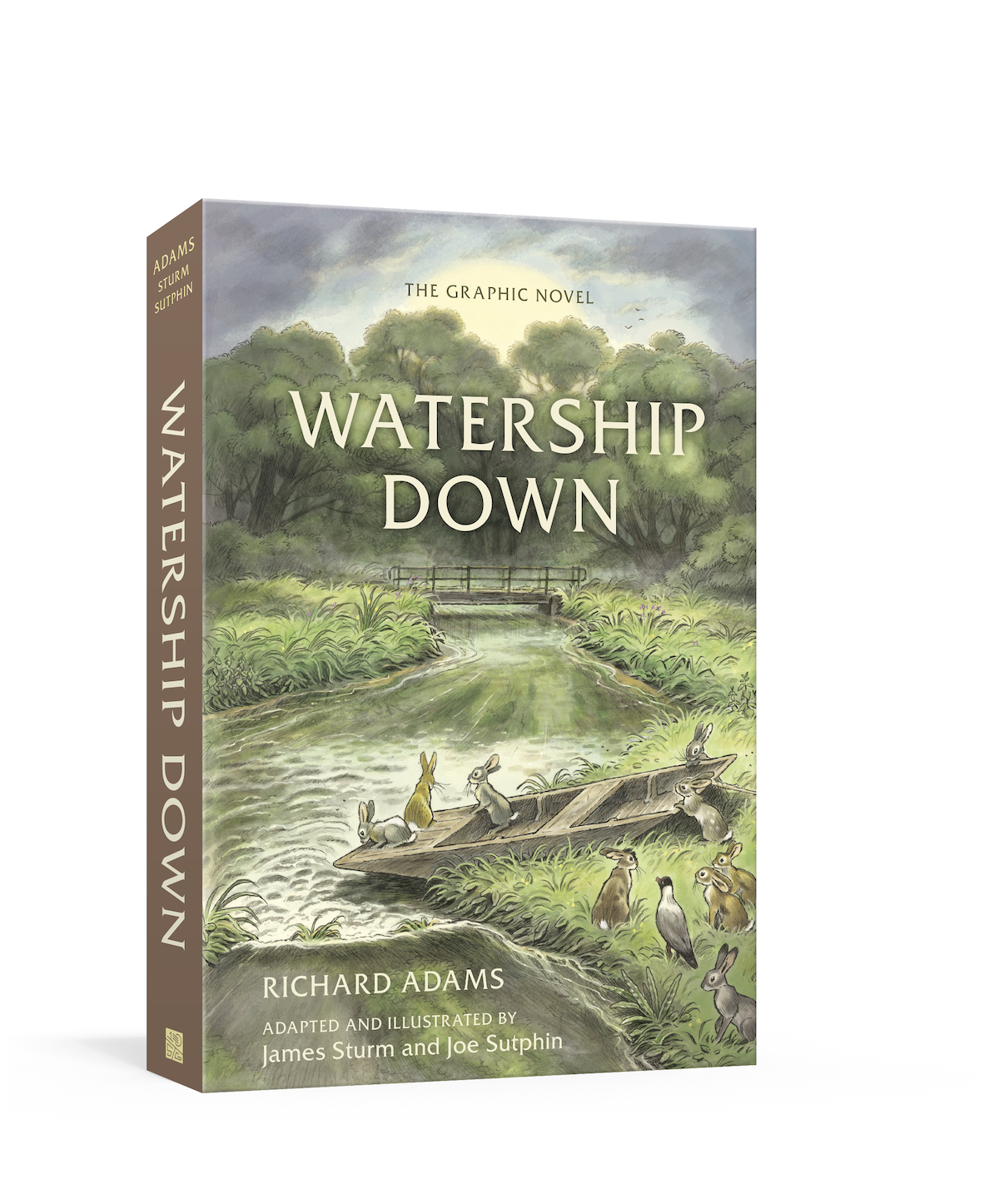
With the graphic adaptation of Watership Down available now from Ten Speed Graphic, The Beat hopped on the opportunity to interview Sturm and Sutphin. We found all about the cartoonist whose work initially connected the two creators, about how visiting the actual locations where the story is set served as a creative catalyst, and about what goes into desgining visually distinctive characters without veering too far away from realistic rabbit depiction.
Comics Beat: How did you both come to be involved in this project?
James: I heard from my agent that Ten Speed and the estate of Richard Adams was looking to create an adaptation of Watership Down. Watership Down is one of my favorite books which I had read many times. I thought it would make a great graphic novel.
When I expressed interest I had a few conversations with Ten Speed and then was asked to create a proposal for the estate to consider. Though I draw comics too, I knew that I was not the right artist to draw this book and I was asked to include three artists that the estate would then choose from if my proposal was selected.
Joe: The project came to me, oddly enough, because of some social media interactions. Someone had posted photos of a beautiful book about a forgotten NY cartoonist, Denys Wortman. I put that book on my Amazon list and was then gifted that book at Christmas by my mother-in-law. I posted some photos of the book and tagged James Sturm, the editor, who followed me back. A month or so later, James reached out to me with the proposal to make samples for Watership Down. Sounds crazy, because it kind of is. You just never know who is seeing the work you post online.
James: I love the fact that Denys Wortman brought us together.

Can you tell us about your collaborative process throughout this book?
James: I was very impressed with Joe’s work and invited him to try out for the book. He hadn’t done a graphic novel before so going into it I thought of this collaboration as if I was looking for a session musician. Then Joe was selected by the estate and it was as if Eric Clapton showed up. High praise I know, but looking at the work he did in Watership Down it’s not hyperbole.
I was primarily responsible for the book’s layout. I read and reread Watership Down as I thumbnailed scene after scene. While the flow of the book was being established I wrote the script using as much language from the book as possible with most of the script being dialogue driven. During this phase Joe was a great sounding board.
After a few rounds of edits (with input from the estate and Ten Speed) I would blow the thumbnail drawings up, drop in the lettering, and Joe would print those out and use them as a guide for the finished art, or the “bones” for the drawings.
Joe: Yes – James and I were really closely knit during his time writing the script. And James was very open and generous with what he was writing; allowing me to offer any insight or input along the way. We worked well together that way.
James’s thumbnails were invaluable to me. He took so much of the weight off by providing the overall positioning of shapes and elements in each panel. This allowed me to skip the mentally taxing inception phase, and go right into the artistic editorial phase where I could observe the layouts being provided and make adjustments to the panel layouts as needed. This let me focus more on getting all of the details and environments correct.
I understand you traveled to the actual setting of Watership Down, where you were able to take “hundreds of reference photos.” Can you tell us about the process of integrating these references into the graphic novel?
Joe: We couldn’t have made what we did without the trip we were able to take to Hampshire in England, or without the relationship with Richard Adams’ daughters, Juliet and Rosamond, who continued to share pivotal details and information throughout the process of creating the graphic novel.
Having been to each of the actual locations, seen them with my own eyes, felt the wind, smelled the damp grass in the drizzling rain – it’s all priceless. It allowed me to go back to all of those photos, and even triangulate those locations on Google Maps with verification through Richard’s text, and see even more of the world around these scenes. All of this enabled me to keep my bearings while my frame of reference moved around the world of Hampshire, often at a very low vantage point. Any level of realism in the finished book was made possible by the trip, Richard’s daughters, and his old friend Aldo Galli who guided us.

Can you share any specific anecdotes from your time visiting Richard’s daughters in England? Were they as integral as catalysts for this project as they were for the original prose novel?
Joe: Our time walking those fields and rivers and hills with Juliet, Ros, and Aldo truly was the catalyst. We didn’t have to go online and sift through the thousands of concepts and speculations that are posted regarding Watership Down. We were able to get any factual information we needed from then on, straight from the people who loved and spent time with Richard. People who’ve heard the stories and facts straight from him.
Would you mind elaborating on the specific challenges you faced adapting Watership Down? Did any particular adaptive element prove especially difficult?
James: One of the collaborators I didn’t mention earlier was Adams himself. His writing is so vivid and cinematic and the story is exquisitely plotted. Laying out the book was pretty straightforward. For me, more than anything, it was the sheer size of the book. Figuring out how to organize all the material and keep track of edits and revisions in both the scripts and the thumbnails could be challenging at times.
Joe: As an illustrator, I’ve typically been able to draw whatever subjects I was most comfortable with in a book. But making a graphic novel required me to immediately be willing to provide every visual that the reader needed. So if I didn’t know how to draw trees very well, then I had to get better at drawing trees really quick! And so on. You just have to rise to the occasion right away.

At what point did you decide to include the rabbit language glossary in the back?
James: I always assumed that would be part of it. When I read the novel I really appreciated the quotes, the map, and the glossary. Collectively it brought depth to the world and I’m glad we could include all three of those things.
What went into the process of designing so many different rabbit characters?
Joe: Getting a lot of bad rabbit drawings out of me in order to hopefully draw some good rabbits. I also leaned into realism as much as I could, while looking for small visual indicators to figure out who is who. I think we all had our concerns that it would become overwhelming to distinguish between so many rabbits, but I think we pulled it off as well as we could, without straying too far into the fantastical. The estate was very clear that they desired something that felt realistic, and less cartoon-like.
James, you mentioned that the work for this book took place during the height of the COVID-19 pandemic in the afterword. What relationship did your experiences during this time have with the work on the graphic novel?
James: Throughout the book, Hazel and company are inspired by stories of El-ahrairah who is this immortal trickster rabbit. In their darkest moments they are sustained by his cunning and bravery. Watership Down as a whole provides the same gift to its readers. Being immersed in this story throughout the pandemic was truly a gift.

What kind of reactions have you received regarding Watership Down so far?
James: I’ve heard a lot of positive reactions to the stunning art and an appreciation to how faithful the book is to the source material. I’ve also heard from many people who have told me that they’ve been meaning to read Watership Down forever; it was their dad’s favorite book or a friend recommended it. For whatever reason they never did but the graphic novel was their way in.
Joe: I have a great number of friends who dearly love Watership Down, and their enthusiasm has been enormous. So many wonderful endorsements from them. We made the book not only as artists or cartoonists, but as Watership Down fans ourselves, and we hoped that other fans would feel honored and cared for in our adaptation. They were in our minds as we made the book. It’s not possible to include every reader’s vision in an adaptation. The best you can do is love the original work, appreciate the reasons the fans love the work as well, and follow your instincts. And when someone hires you to adapt a classic work, you have to recognize that they hired you to make what they know you make – and then you trust in the work that comes naturally to you.
James: Watership Down is such a beloved book for generations of fans. We tried as best we could in the space and time we had to do it justice.
Watership Down: The Graphic Novel is avaiable now at your local bookstore and/or public library.


